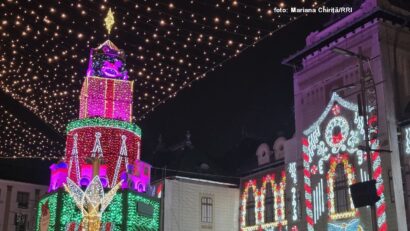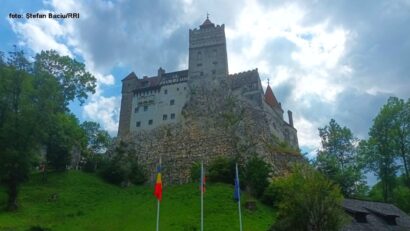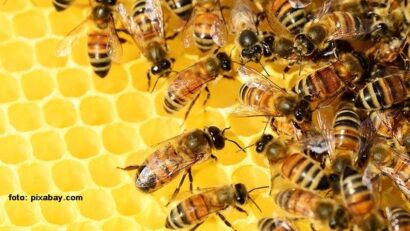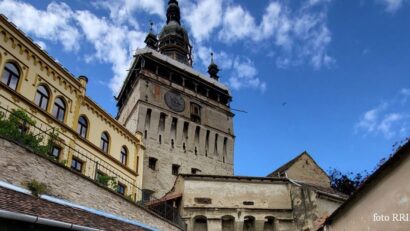Tourism in Cluj
Tourism in Cluj and its surroundings has been on the rise in recent years.
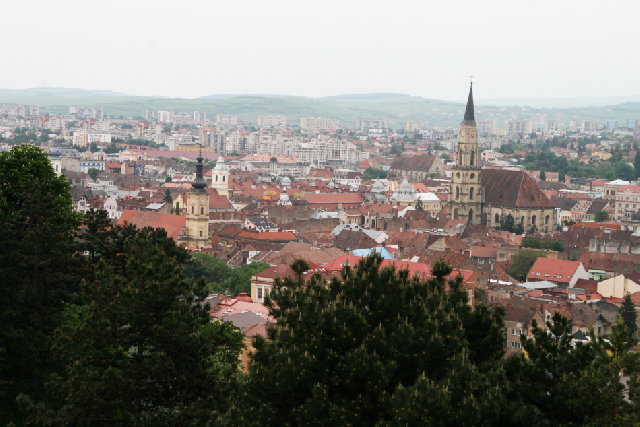
Daniel Onea, 08.11.2018, 12:29
Today we travel to the
west of Romania, to Cluj county. We begin our trip in the city of Cluj Napoca,
whose centre is full of tourist attractions. The events held in this part of
the country are numerous, many of international scope, and the gastronomy is
really special. The oldest cookery book in Romania dating from the 15th
century has been republished here. In the centre you will be surprised at the
large number of churches and their diversity. You will find on the same street
Reformed, Roman-Catholic, Unitarian and Greek-Catholic churches. Cluj has been
famous for its religious tolerance since the 17th century, when a
new denomination appeared here, Unitarianism. The city’s non-religious
buildings are equally diverse in terms of architectural style.
The entire central part is
home to structures built at the end of the 18th century in the Habsburg
style. Our guide today, Marius Oprea, from the Cluj Napoca Tourist Information
Centre, tells us more about the city’s historical centre:
There are several
historical buildings here, such as the Roman-Catholic St Michael’s Church, the Matthias Corvinus statuary group, the Banffy
Palace which houses the Art Museum, the Metropolitan Cathedral, the Lucian
Blaga National Theatre and, of course, the Museum Square. These structures can
be found in the central area and, being close to one another, can be visited on
foot. There are other sites not far from the centre such as the Citadel Hill
with the ruins of the former Habsburg fortress from where you can get a view of
the city, the Botanical Gardens, one of the most visited tourist sites in Cluj Napoca
and the Romului Vuia Ethnographic Park, the oldest of its kind in the country.
Cluj Napoca has always been and will remain an open city, it can be visited at
any time of the year. The winter may be coming, but there are many events
planned, and this makes the city attractive for tourists.
Cluj Napoca is also home
to many important national and international events. Marius Oprea:
Untold is the most
important music festival in this part of Europe. It takes place every year at
the beginning of August. The biggest and most important film festival in
Romania, Transylvania, is held at the end of May and the beginning of June. We
also host the Cluj Days, Jazz in the Park and Electric Castle, which takes
place every year in the Bonffy castle in Bontida. The Christmas fair will begin
on the 23rd of November and we will also host an international
theatre festival called Interferente, which is held every two years and which
is held at the end of November this year.
Marius Oprea with the
Travel Information Center in Cluj Napoca is inviting us to visit the tourist
attractions in the county.
Most of the tourists who
travel to Cluj Napoca are also visiting the Turda Salt Mine, as it’s just a
30-minute drive from the city. This salt mine is unique in the country and even
in this part of Europe. It’s a former salt mine on different levels, which was
restored with European funds and today looks more like an underground city. The
mine contains a series of treatment and recreation facilities, including a lake
where you can boat rides. Other sites close to the salt mine and also worth
visiting are the Turda Gorges, the Banffy Castle in Bontida and of course the
mountain ranges of Cluj County with the Rachitele Waterfall and the lakes area
of Belis Tarnita.
The Turda salt mine was
first mentioned in historical documents on May 1st 1271, shortly
after the first mention of the city of Turda. The rich deposits of salt in this
area were exploited for centuries and that led to the development of the city,
which became the headquarters of the Transylvanian ruling councils. The city,
which was also the first to decree the freedom of religion, had a significant
contribution to the material prosperity of the Austro-Hungarian Empire.
The salt mine was modernised
in 2010 and besides underground boat rides, it also offers other facilities,
such as mini-golf courses, a Ferris wheel, bowling, as well as an outdoor
elevator going up to the mine’s ceiling at 50 meters high. After all these activities
you may get hungry and want to try some of the delicious local cuisine. Here is
Marius Oprea with more on this issue.
People are increasingly
interested in local and traditional cuisine and we are proud to be in
possession of Transylvania’s oldest book of recipes. The book, which was first
published in late 15th century, has been republished and is now used
as inspiration for many restaurants, which are trying to make certain recipes known
again. It was translated by professor Lukacs Jozsef from Cluj Napoca and was
published in partnership with a publishing house from Bucharest. The recipes
are 90% accurate as they no longer use some of the original ingredients, but
they do retain the local character.
According to Marius Oprea,
the number of tourists visiting the region is on the rise:
Our travel information centre
is visited by 20 thousand people annually. We provide leaflets and pamphlets in
9 different languages as tourists come from all over the world. Most of them are
impressed with the city and the surrounding areas and their number grows by 30%
each year, being double than the national average. This is by no means possible
thanks to the events taking place here and the region’s tourist attractions.

